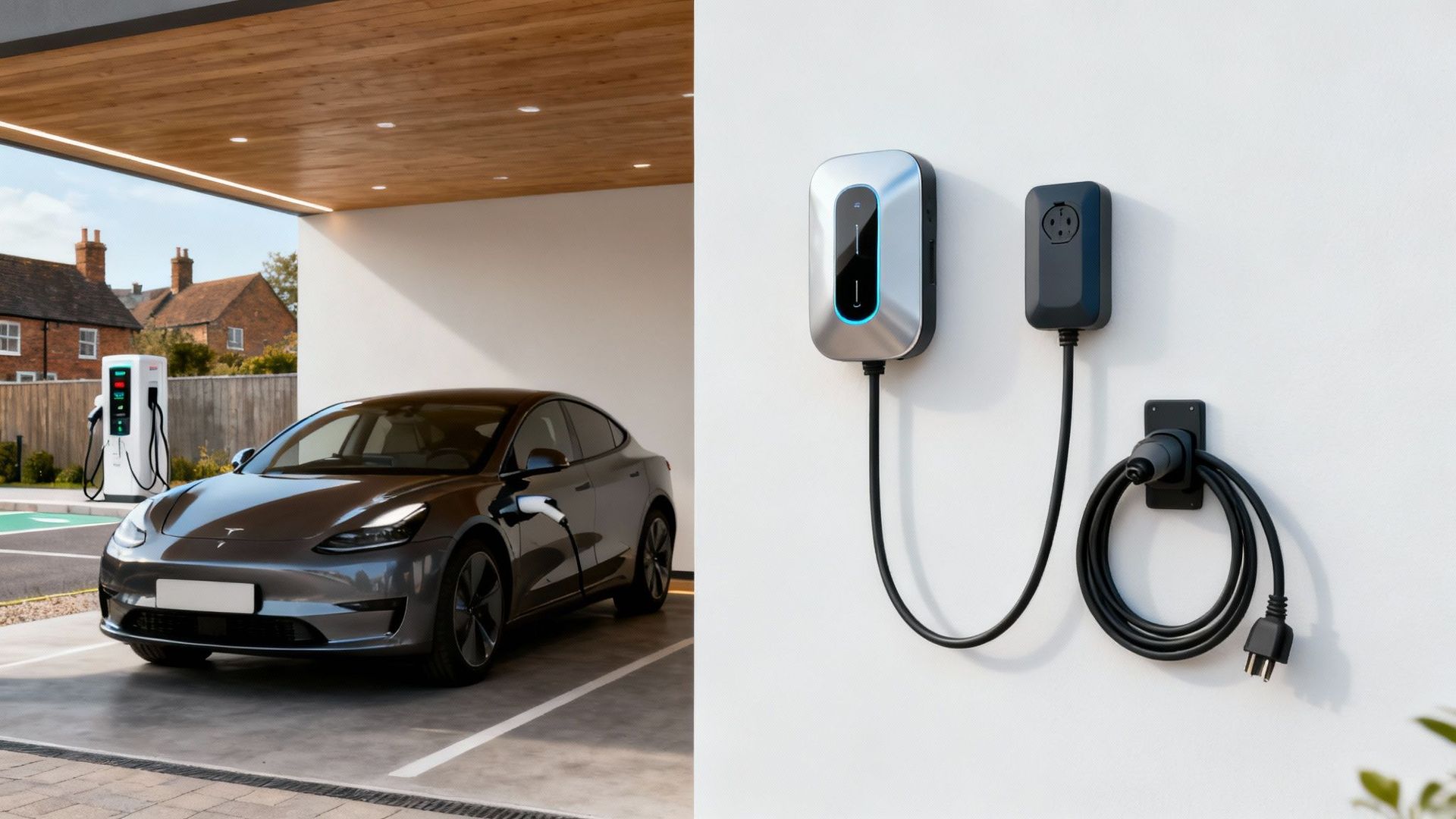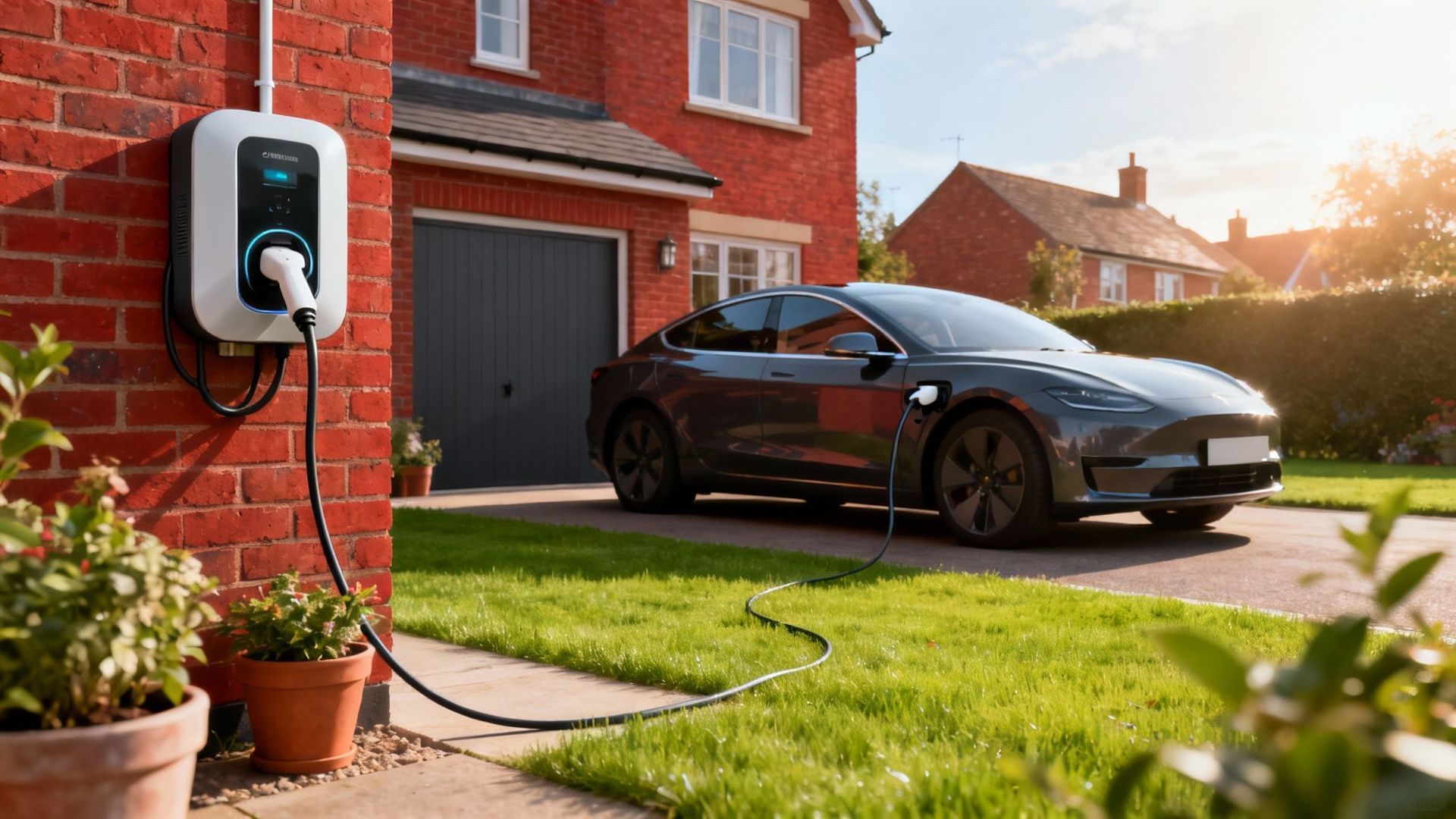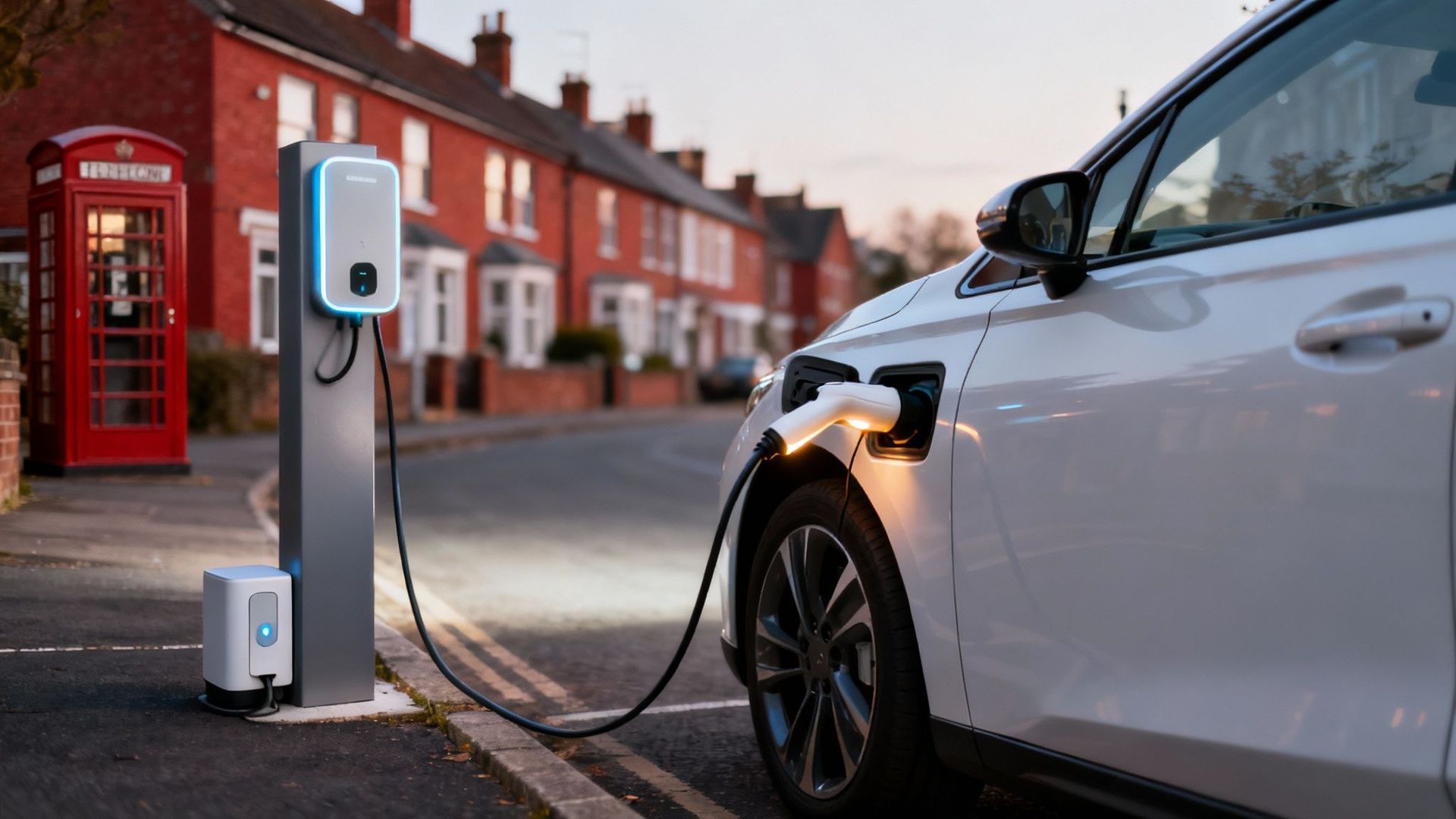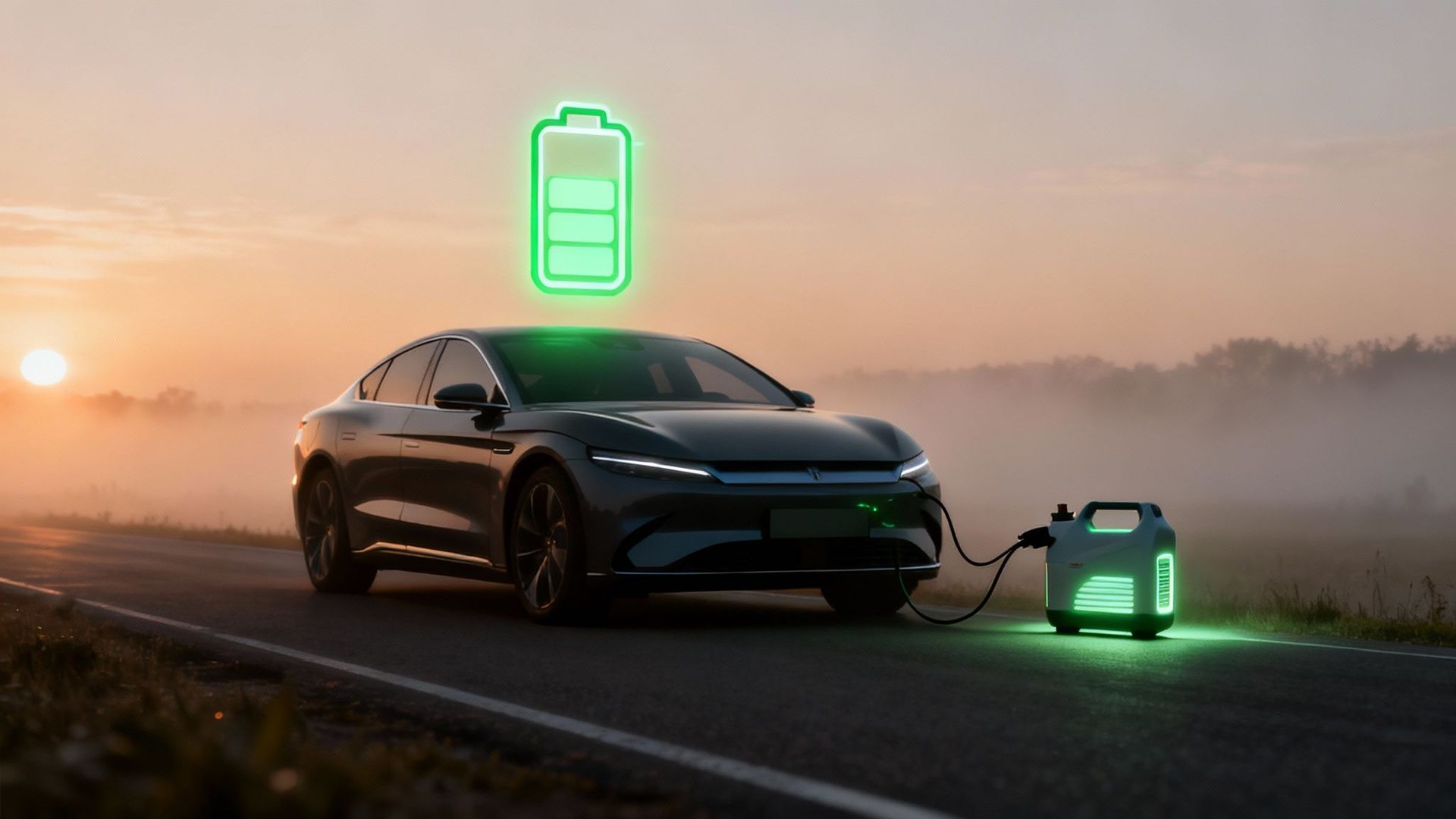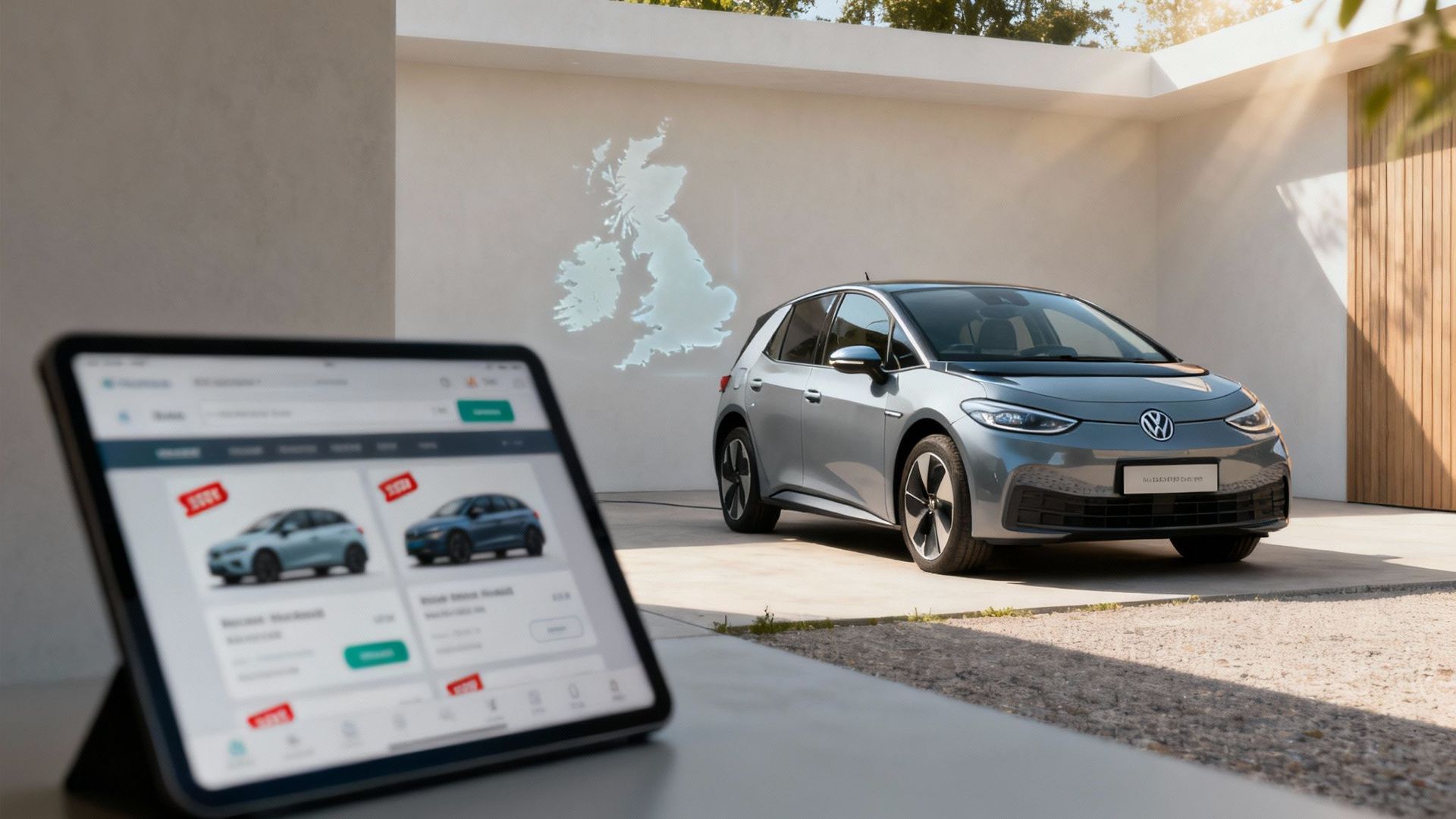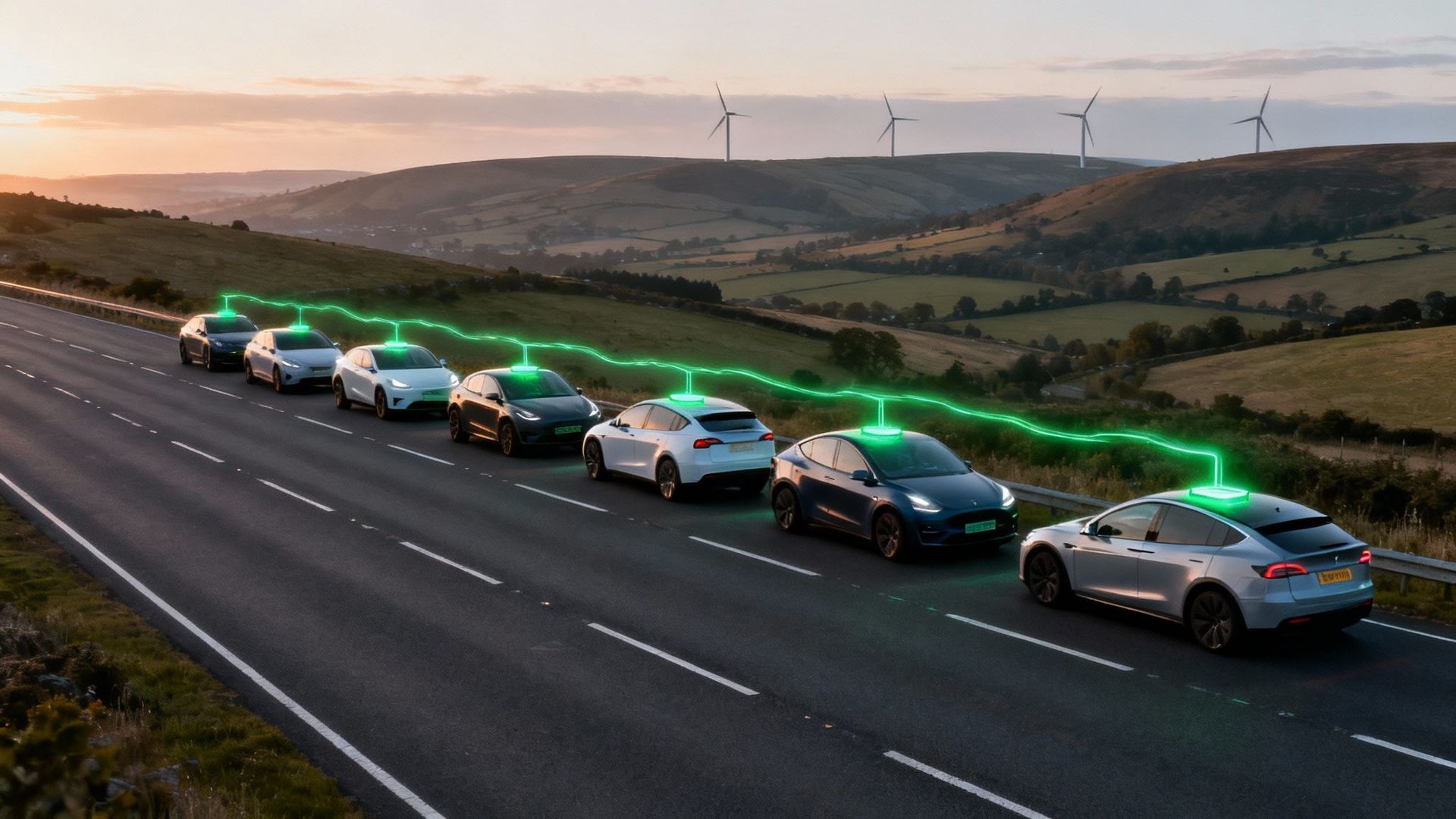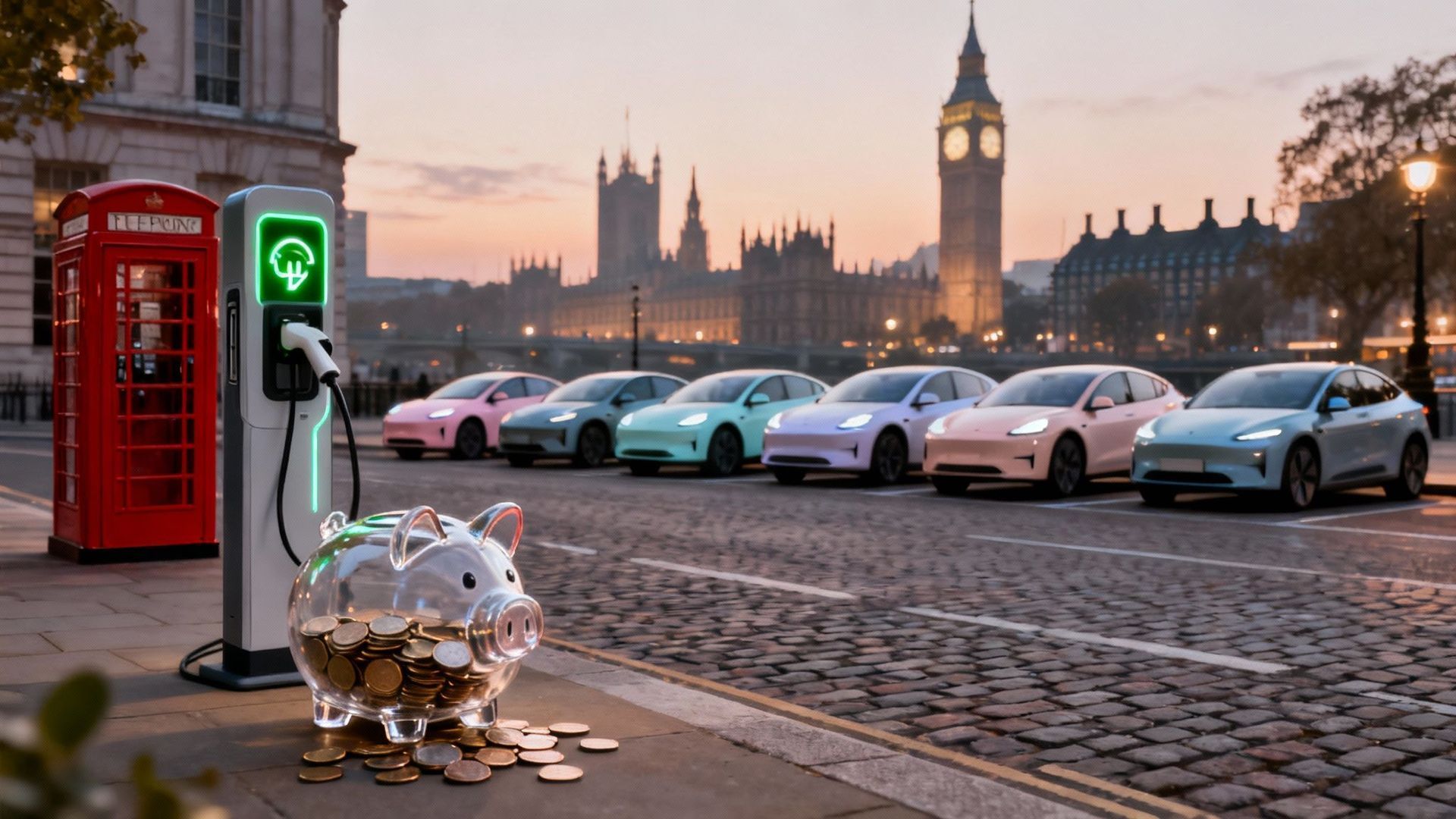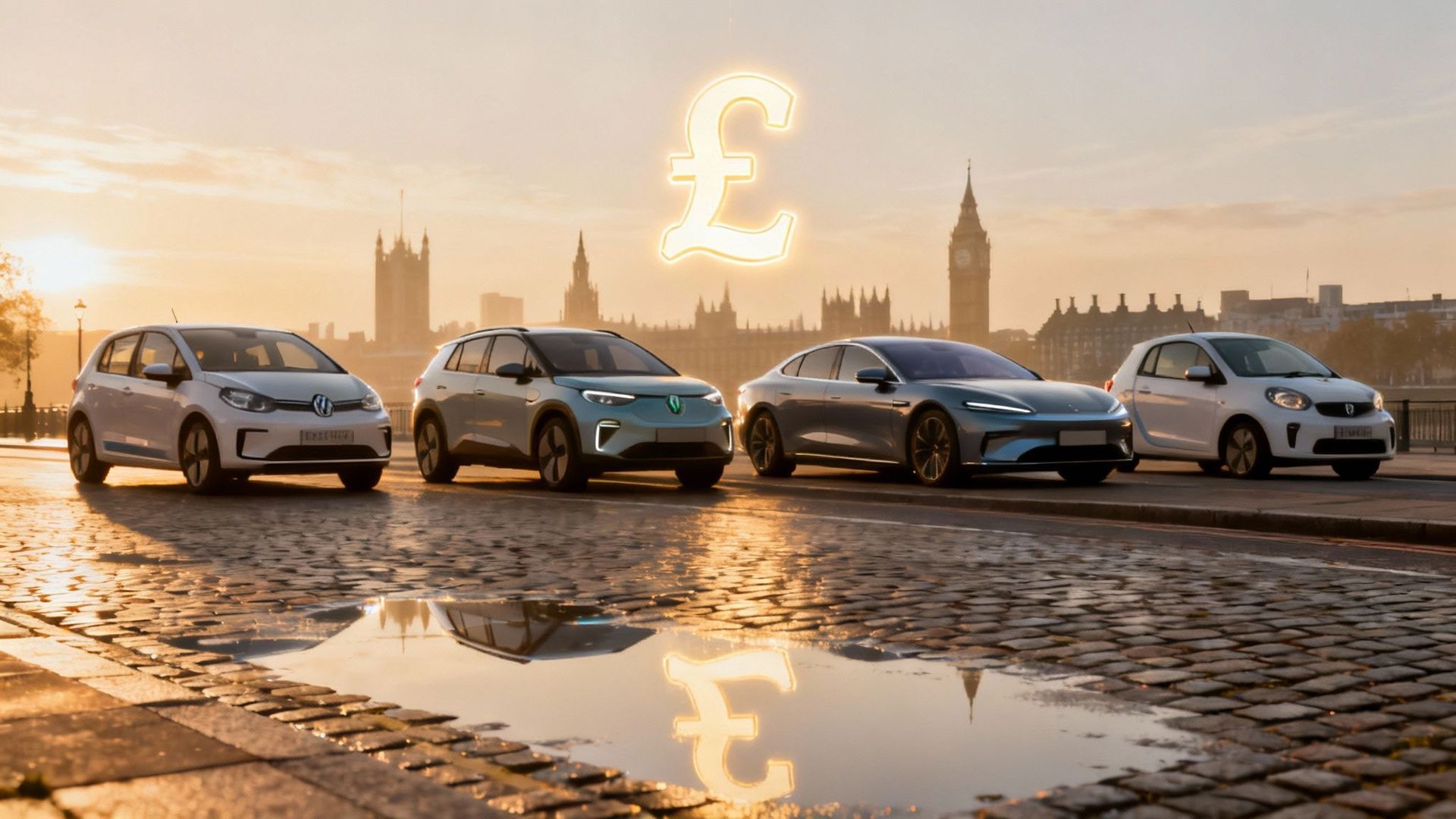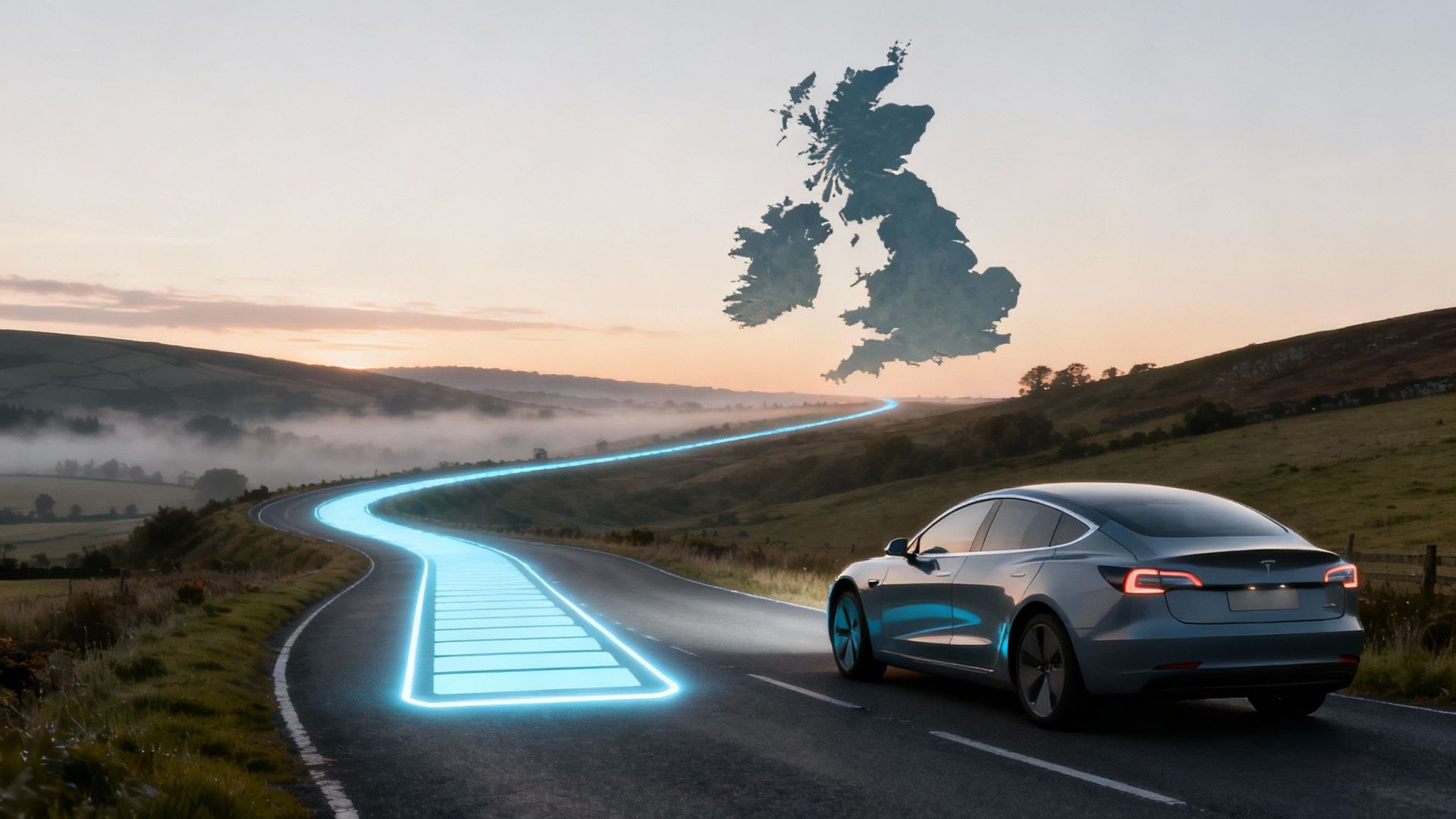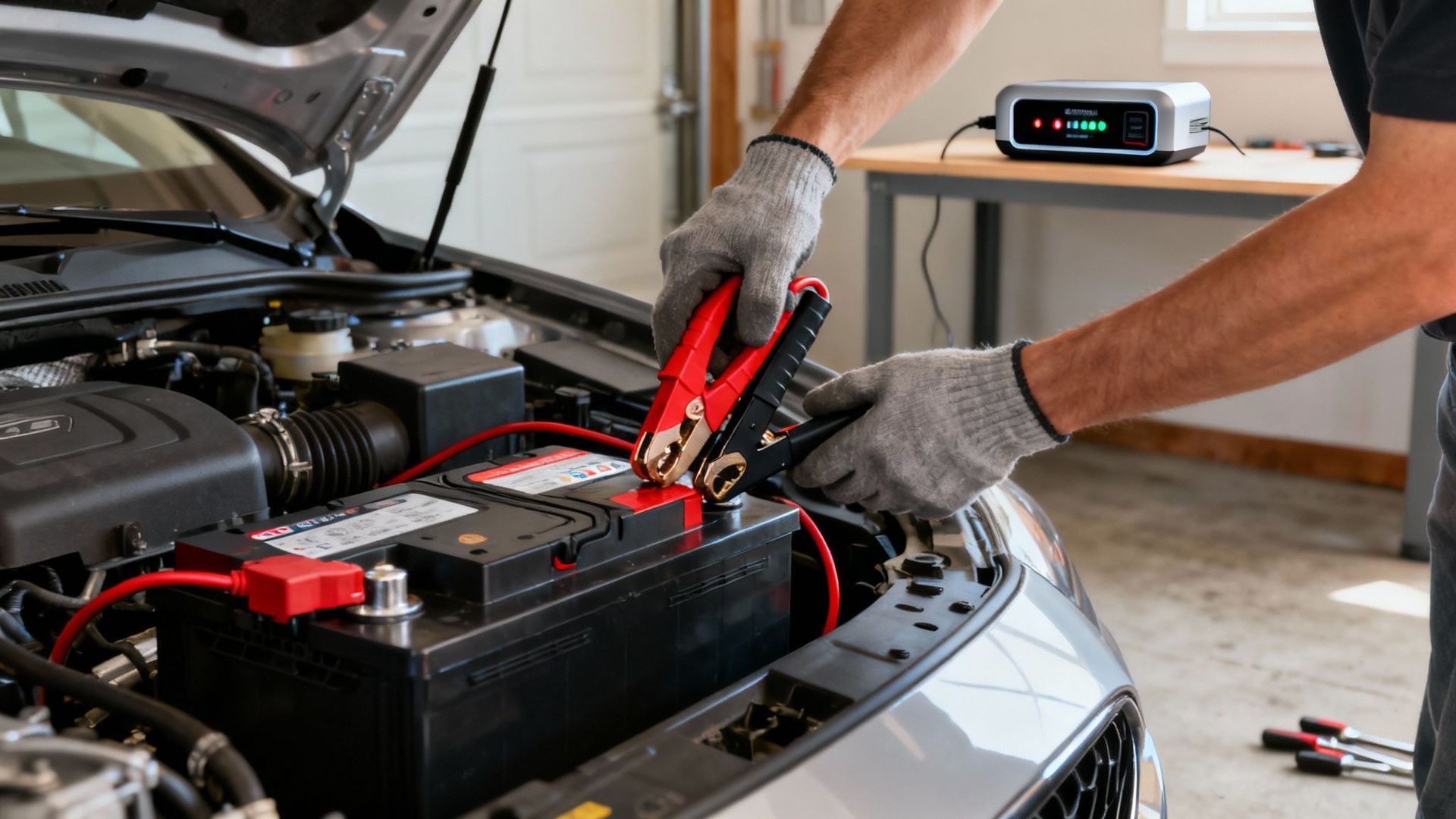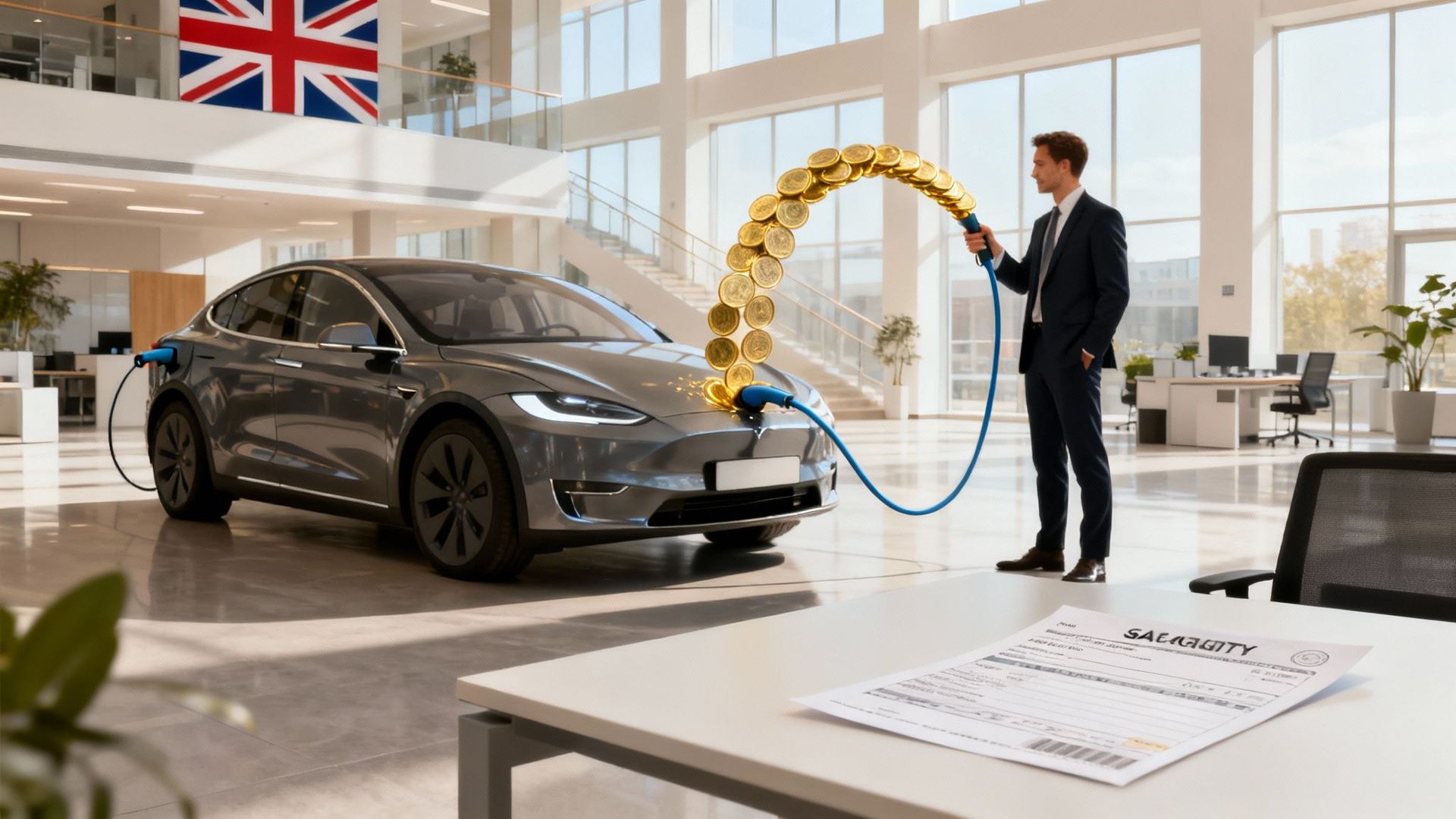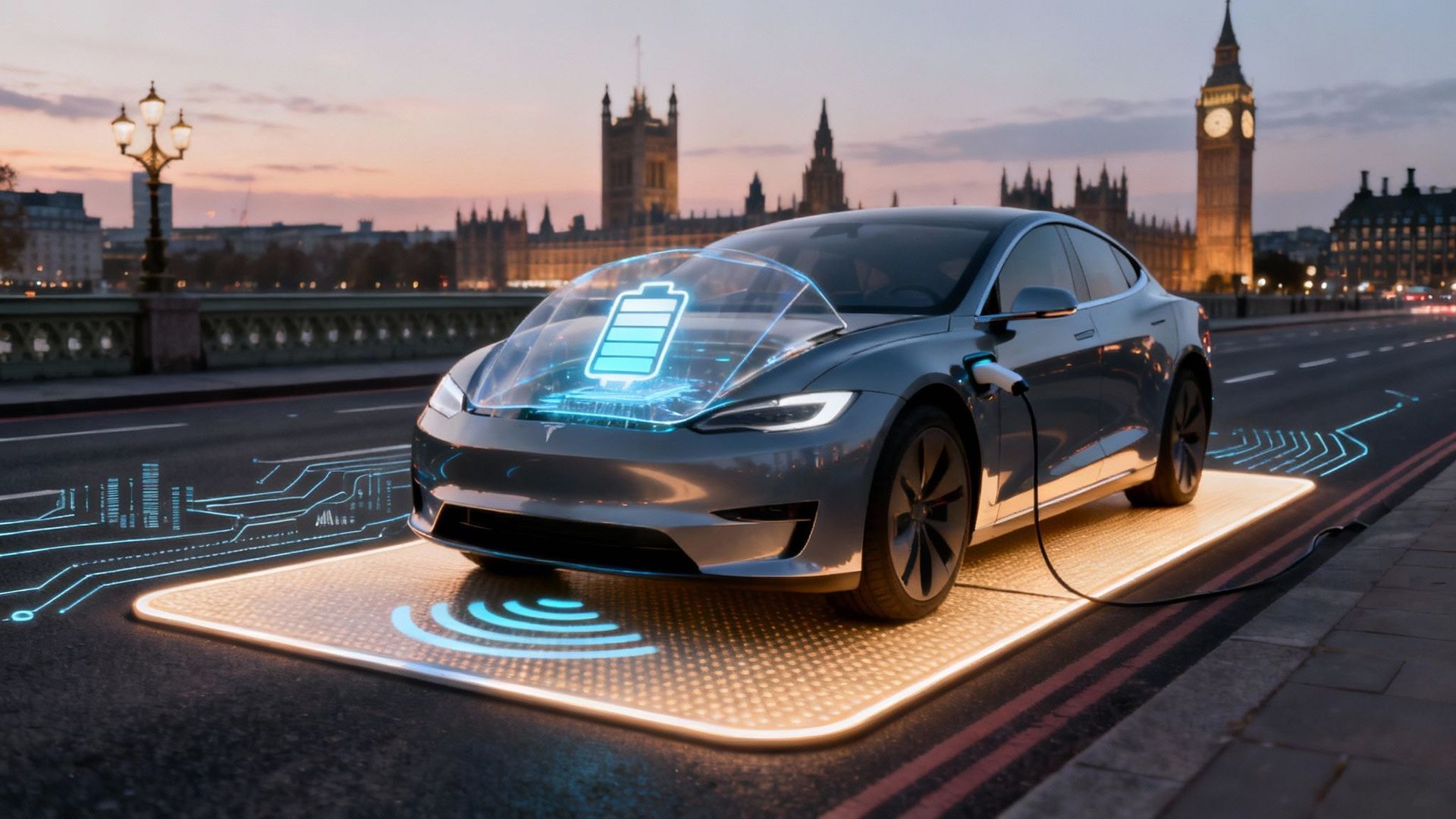Finding the Best Home EV Chargers UK Drivers Recommend (Without Going Barmy)
Right, let's cut to the chase. You're hunting for the best home EV charger in the UK, and the usual suspects are already doing the rounds: the brainy Ohme Home Pro for its tariff-slurping cleverness, the flash Hypervolt Home 3 Pro for looking good on your wall, and the Myenergi Zappi for the smug solar panel crowd.
But let's be brutally honest. The "best" charger is the one that just works without you having to think about it. It’s the one that doesn’t make you want to introduce it to a sledgehammer first thing on a frosty morning.
Why Bother with a Proper Home Charger Anyway?
So, you've taken the plunge and bought an electric car. Congratulations! You've officially earned the right to look smug as you glide past petrol stations. But now you're faced with a quintessentially British problem: how do you get the leccy into the thing without dangling a garish orange extension lead through the letterbox like a common burglar?
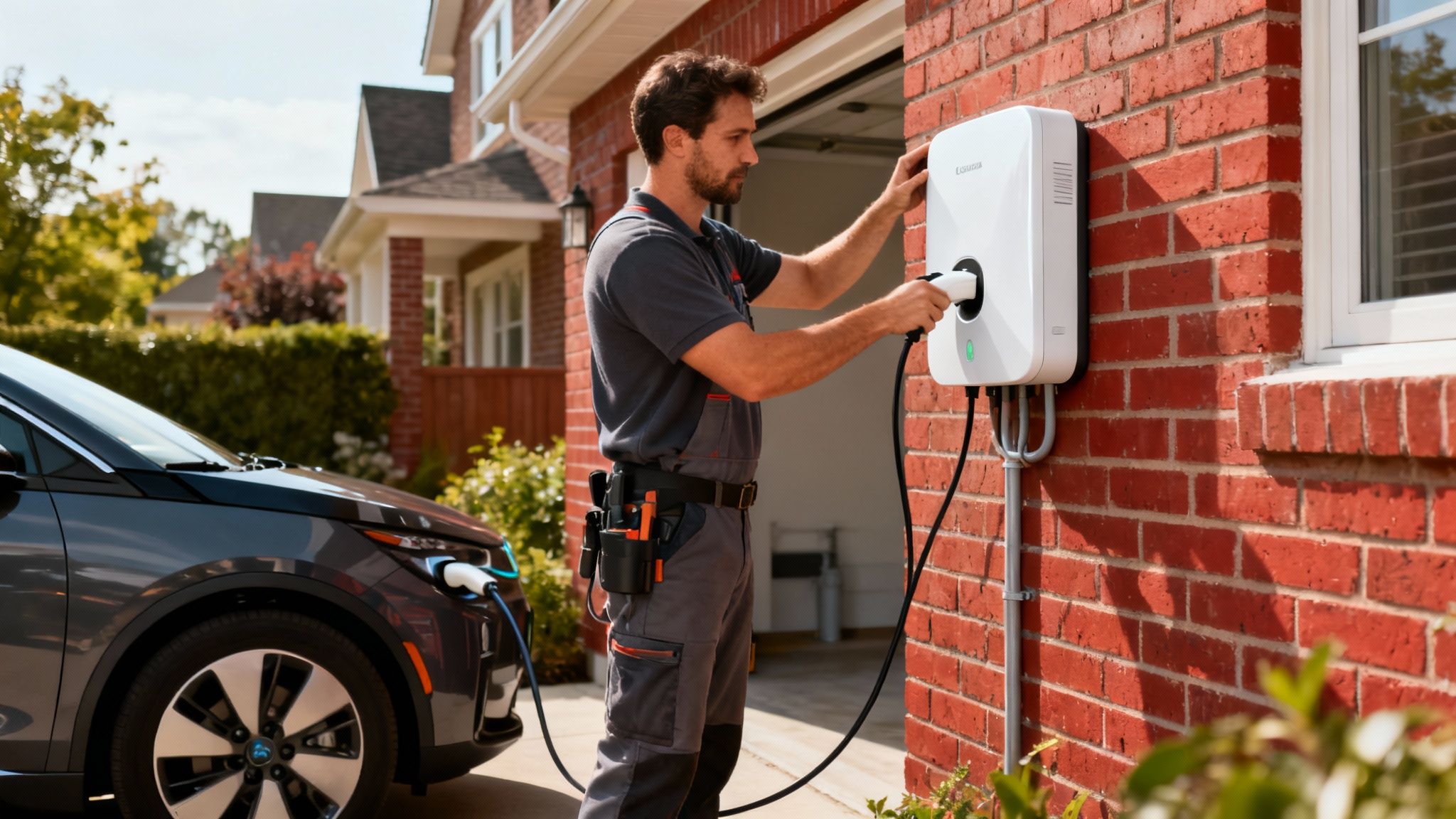
You might be tempted to use the three-pin ‘granny’ charger that came with the car. Don’t. That thing is for emergencies only—giving you just enough juice to limp to a proper charge point. Relying on it daily is like trying to fill a bathtub with a leaky thimble; it’s agonisingly slow and, quite frankly, a bit of a fire hazard. This is where a dedicated home wallbox comes in, turning your driveway into your own private fuel station.
The market for these contraptions has gone absolutely bananas, thanks in no small part to the government’s grand plan to electrify everything. We're not talking about a few niche gadgets anymore; this is a serious business. In fact, the UK electric vehicle charging market was valued at a chunky £665 million in 2024 and is forecast to swell to over £10 billion by 2033 .
That explosive growth means more choice for you, but it also means wading through a swamp of marketing guff to find what you actually need.
| Charger Feature | Why It Matters (in Plain English) | What to Look For |
|---|---|---|
| Charging Speed | How quickly your EV's battery goes from "Oh, bugger" to "Let's go". | 7.4kW is the standard for most UK homes and is more than fast enough for an overnight fill-up. |
| Smart Tariffs | This is the magic bit that stops you giving all your money to the energy giants. | Check it plays nicely with agile tariffs like Octopus Intelligent or OVO Charge Anytime. |
| Cable Type | Do you want a snake permanently attached to your wall or not? | Tethered is convenient; untethered looks tidier. Pick your poison. |
This guide is here to help you slice through that noise. For a bird's-eye view, our overview of the EV charging landscape in the UK gives you the bigger picture of what's happening out there.
Now, let's get our hands dirty and find a charger that’s actually worth your hard-earned cash.
Understanding the Jargon That Actually Matters
Right, before we get into the brand-on-brand fisticuffs, let's translate the gibberish that charger companies love to throw around. It's shockingly easy to get bamboozled by acronyms and end up with a fancy, overpriced box on your wall that's about as useful as a chocolate teapot.
The first, and most important, figure you’ll see is the charging speed, measured in kilowatts (kW). The vast majority of home chargers you'll see are 7kW , which is the sweet spot for the UK’s bog-standard single-phase electricity supply. A 7kW charger will happily top up most electric cars overnight, turning your driveway into a far cheaper version of a Shell garage.
You might also spot some monstrously powerful 22kW chargers being advertised. While they sound impressive, they’re practically useless for the average British semi. To handle that much power, you need a three-phase electricity supply, which is about as common in residential properties as a functioning government policy. Unless you live in a converted warehouse or a Premiership footballer's new build, you'll be sticking to 7kW .
This chart gives you a rough idea of how charging power affects the time it takes to fill a typical 60kWh EV battery from empty to full.
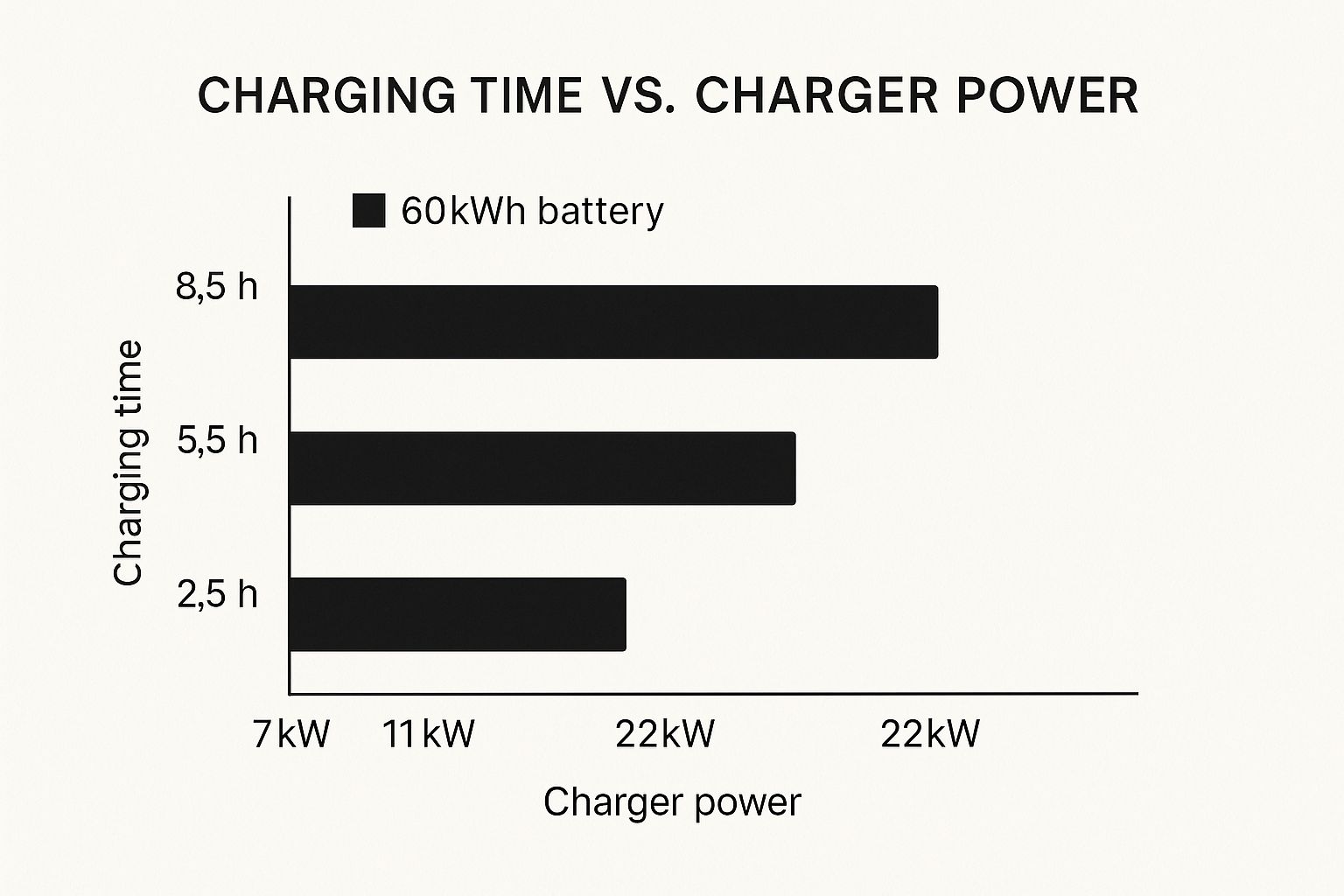
As you can see, jumping from 7kW to 11kW or 22kW slashes the time, but only if your home’s wiring can actually take the strain. Which it probably can't.
Tethered vs. Untethered: The Great Cable Kerfuffle
Next up is the eternal question: tethered or untethered? A tethered charger comes with the charging cable permanently attached. It’s dead convenient – just grab the cable and plug it in. The main drawback is you’re stuck with that specific cable, and it can look a bit like a sleeping python dangling on the wall when not in use.
An untethered charger, on the other hand, is just a socket. You use the portable cable that came with your car. This setup looks much tidier and gives you more flexibility. The trade-off? You have to lug the cable out of your boot every single time you want to charge. It's a proper faff.
A simple rule of thumb: Tethered is for convenience lovers who want a true 'grab-and-go' solution. Untethered is for the minimalists who prioritise a tidy-looking wall over saving 30 seconds of their life.
Finally, you’ll hear the term "smart charging" . This isn't just marketing waffle; it's absolutely essential. Smart chargers connect to the internet, letting you schedule your charging sessions through an app. This means you can plug in when you get home but tell the charger to only start gulping down power after midnight when electricity tariffs are laughably cheap. It’s the single biggest money-saving feature you should be looking for.
A Head-to-Head Comparison of Top UK Chargers
Right, let's get to the main event. It's time to chuck the big names in the ring and see who emerges victorious. We're pitting the popular Ohme Home Pro , the stylish Hypervolt Home 3 Pro , the dependable Pod Point Solo 3, and the eco-warrior’s favourite, the Myenergi Zappi , against each other.
Forget the glossy brochures and marketing nonsense. We’re more interested in how these chargers perform in the real world—on a wet Tuesday night when you just want to plug your car in and forget about it. How slick is the app? Does the smart charging actually save you money, or is it just another gimmick to wrestle with? And, most importantly, will the blasted thing still be working in a few years' time?
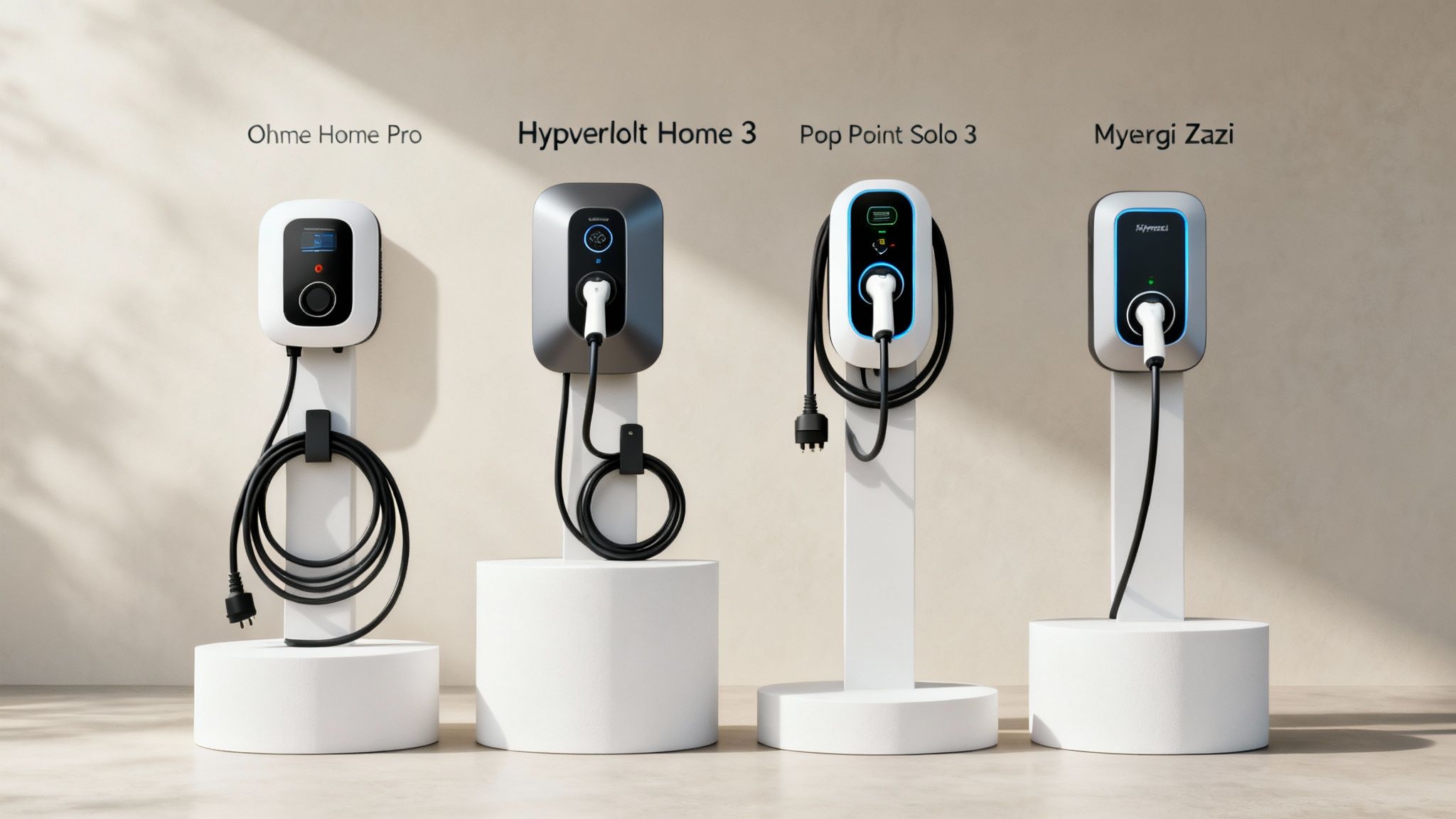
This is the ultimate grudge match of the best home EV chargers UK drivers are actually spending their money on. Let's get stuck in.
The Smart Money Choice: Ohme Home Pro
The Ohme Home Pro has become the darling of the EV community, and for good reason. Its killer feature is its freakishly clever integration with smart energy tariffs like Octopus Intelligent and OVO Charge Anytime. It doesn't just start charging at a pre-set time; it actively conspires with your tariff and your car to charge only when electricity is at its absolute cheapest.
It's a small, unassuming black box with a handy little screen that gives you a quick status update. While the app is simple enough, its reliance on a 4G signal can be a right pain if you live in a mobile signal black hole. For pure, automated penny-pinching, though, it’s genuinely brilliant.
The Style Icon: Hypervolt Home 3 Pro
If how your charger looks is just as important as how it performs, the Hypervolt Home 3 Pro has probably already caught your eye. It’s a larger unit, but its sleek design and customisable glowing lightning bolt make it look more like a piece of modern art than a box that puts electricity in your car.
But it’s not all style over substance. The Hypervolt is built right here in the UK and boasts excellent smart features, including solar integration and three different charging modes. The app is solid, and it offers an unusually long 10m tethered cable as an option, which is a godsend for anyone with a ridiculously awkward driveway.
The Reliable Workhorse: Pod Point Solo 3
Pod Point is one of the old guard in the EV charging game, and their chargers are a permanent fixture at Tesco car parks up and down the country. The Solo 3 is their home offering, and it’s best described as the reliable Ford Focus of the charger world. It’s not flashy, but it gets the job done with minimum fuss.
Its main selling point is simplicity. The app is clean and also integrates with their vast public charging network, meaning you can manage all your charging costs in one place, which is a nice touch.
However, a glaring omission is its lack of deep smart tariff integration. While you can schedule charges, it won't dynamically adjust to agile tariffs like a clever clogs. This means you could be missing out on the ridiculously cheap overnight rates that others can snap up automatically.
This makes it a solid, if slightly dim-witted, choice for those who value simplicity over squeezing every last penny.
The Eco-Warrior's Champion: Myenergi Zappi
For anyone with solar panels (or plans to get them), the Myenergi Zappi is in a league of its own. It was designed from the ground up to play nicely with renewable energy, and its 'Eco' modes can charge your car using 100% surplus solar power . This means you can genuinely run your car on sunshine, which is about as satisfying as it gets for an EV owner.
The unit itself is on the chunky side and features a built-in LCD screen for those who’d rather not live their lives through a smartphone app. It’s a feature-rich charger that’s perfect for the eco-conscious data geek, though it might be total overkill for someone who just wants to plug in and charge overnight.
UK Home EV Charger Feature Comparison
To help you see the key differences at a glance, we've slapped the core specs for each charger into a simple comparison table. This should make it easier to weigh up what matters most to you, whether that's the price, solar gubbins, or a particular smart feature.
| Charger Model | Max Power | Cable Type | Key Smart Feature | Solar Integration | Estimated Installed Price |
|---|---|---|---|---|---|
| Ohme Home Pro | 7.4kW | Tethered (5m) | Dynamic smart tariff integration | Yes | From £949 |
| Hypervolt Home 3 Pro | 7kW | Tethered (5-10m) | Voice control & customisable aesthetics | Yes | From £995 |
| Pod Point Solo 3 | 7kW | Tethered/Untethered | Public network integration in one app | No | From £899 |
| Myenergi Zappi | 7.4kW | Tethered/Untethered | Advanced solar energy diversion | Yes (Best-in-class) | From £1,095 |
As you can see, while they all do the same basic job, they each have a distinct personality. The "best" one really depends on whether your priority is saving every last penny, running your car on sunshine, or simply having a reliable box that just works.
Calculating the True Cost of a Home Charger
Right, let's talk brass tacks. That shiny new charger you’ve got your eye on has a price tag, but that’s just the opening salvo. The real cost of getting a home EV charger installed is a bit like a British weather forecast; it starts off looking simple and then gets complicated, expensive, and potentially quite miserable.
The first figure you'll see is for the hardware itself, which typically runs from £600 to over £1,000 . But the charger is just a fancy paperweight until an electrician has worked their magic. This is where the costs can get properly eye-watering.
A "standard installation" is the holy grail. This usually means your fuse box is modern, sits on an outside wall, and allows for a dead-simple cable run to your chosen spot. If you tick all those boxes, you might get away with an installation fee of around £400-£600 .
When Installation Costs Go Rogue
Here’s the rub, though: most British homes are not perfect little new-build boxes. If your consumer unit (that’s your fuse box) is a relic from the 1970s, is located on the completely wrong side of the house, or is already groaning under the strain, prepare for your wallet to take a proper walloping.
Extra-long cable runs, digging trenches across your manicured lawn, or upgrading your entire home's electrical supply can easily add hundreds, if not thousands, to the final bill. Always, and I mean always , get a detailed quote that breaks down every potential charge before you agree to anything.
The golden rule is this: the price on the website is almost never the final price you pay. Treat the advertised "installed from" price with the same level of suspicion you'd reserve for a politician's promise. It's a starting point, not a guarantee.
Grants, Tariffs, and Long-Term Savings
What about those government grants you’ve heard so much about? Well, for most homeowners in houses, that ship has sailed, hit an iceberg, and sunk. The OZEV grant is now mostly reserved for people living in flats or rented properties. So, don't bank on a handout from Whitehall to soften the blow.
The real long-term saving comes from smart charging. By pairing your charger with an EV-friendly energy tariff, you can tell it to fill up your car when electricity is ludicrously cheap—often less than 10p per kWh . This is where the initial investment really starts to make sense. To get a better handle on these running costs, check out our sceptic's guide to not getting fleeced on electric car charging costs in the UK .
This strategy is catching on, with the UK market for EV charging equipment booming. In 2024 alone, an estimated 50,640 units were sold, and this figure is projected to climb to over 169,000 by 2030 . You can explore more data on these market projections on Mordor Intelligence. The bottom line is, while the upfront cost can make you wince, smart usage turns your driveway into the cheapest filling station in town.
Matching the Right Charger to Your Lifestyle
A one-size-fits-all approach to EV chargers is for muppets. The idea that a single "best" charger exists for everyone is pure marketing flannel, designed to part you from your cash with minimal fuss. In reality, the perfect charger for a high-mileage company car driver is worlds apart from what the owner of a weekend runabout with a roof full of solar panels needs.
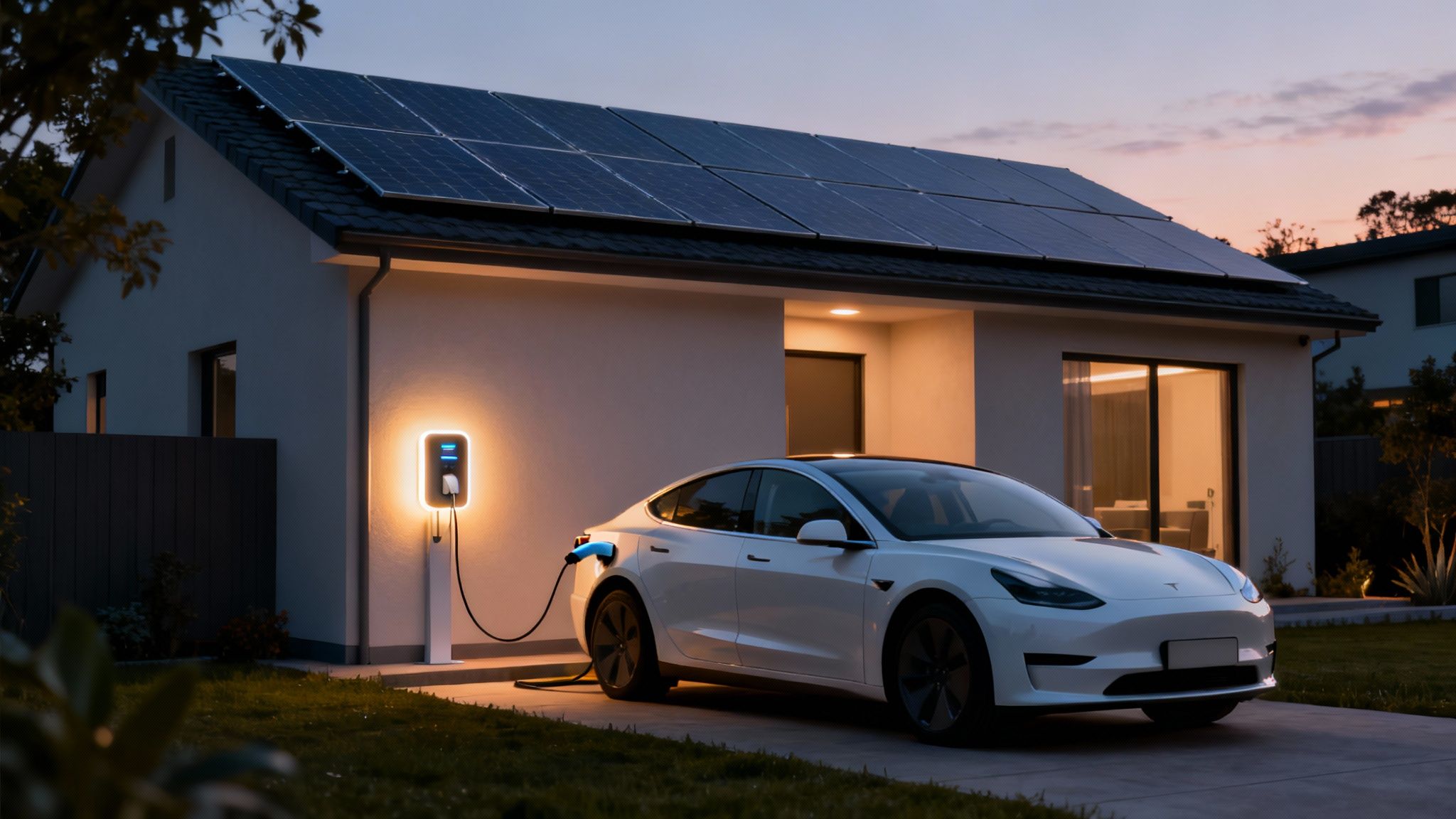
This is about finding a charger that slots neatly into your life, not forcing your routine to revolve around a glorified plug socket. Let’s break down a few real-world scenarios to see which tribe you belong to.
The 'Set It and Forget It' Commuter
Are you the type who just wants the car charged by 7 am without a second thought? You pull up, plug in, and simply expect a full battery in the morning. You couldn't give a toss about graphs or optimising every last kilowatt-hour; you just need it to work. Every. Single. Time.
For this no-nonsense approach, a dependable workhorse like the Pod Point Solo 3 is a solid bet. Its app is refreshingly simple, and the ability to manage both your home and public Pod Point charging sessions in one place is genuinely handy. It’s the no-drama choice.
You don't need a charger with a million features you'll never use. The best home EV charger for a UK commuter is reliable, simple, and doesn’t demand a degree in rocket science to operate before your morning coffee.
However, if saving every last penny on your energy bill is part of your "set and forget" fantasy, then the Ohme Home Pro is king. Its dynamic tariff integration means it does all the clever stuff for you, automatically hunting down the cheapest off-peak electricity. You just plug in, and it handles the rest.
The Data Nerd and Optimiser
Maybe you’re the polar opposite. You love a good spreadsheet, you track your energy use with forensic detail, and the idea of shaving a few quid off your charging bill gives you a genuine thrill. You want total control, detailed reports, and every smart feature under the sun.
If that sounds disturbingly familiar, then the feature-packed chargers are right up your street. The Hypervolt Home 3 Pro delivers fantastic control and data through its slick app, letting you fiddle with settings to your heart’s content. It’s a brilliant all-rounder for the tech-savvy owner who wants both style and substance.
The Eco-Warrior with Solar Panels
Finally, we have the eco-warrior. You’ve got solar panels glistening on your roof, and your ultimate goal is to run your car on pure, unadulterated sunshine. You see the National Grid as a last resort, not your go-to power source.
For you, there’s only one true champion: the Myenergi Zappi . This charger was built from the ground up specifically for solar integration. Its ‘Eco’ modes are brilliantly effective at diverting surplus solar energy straight into your car’s battery, letting you achieve that dream of zero-cost, zero-carbon motoring. It’s not just a feature; it’s the entire point of the product. Getting this right is critical, so our guide to home EV charger installation is essential reading.
Our Verdict on the Best Home EV Chargers
After digging through the specs and metaphorically smashing these chargers together, it's time to pick some winners. The truth is, there's no single "best" charger for everyone. Your perfect match really depends on what you need it to do, how you drive, and whether it clashes with your hanging baskets.
So, instead of a wishy-washy one-size-fits-all answer, we're highlighting the chargers that truly excel in their specific fields. This is about helping you find the right fit for your situation, so you can plug in with confidence rather than buyer's remorse.
And the Winners Are…
Here are our top picks for the best home EV chargers for UK drivers, each one a standout in its own right.
-
Best Overall Value: Ohme Home Pro
For a masterful blend of smarts and price, the Ohme is tough to beat. Its ability to sync with dynamic energy tariffs is genuinely class-leading, automatically finding the cheapest times to charge. If you want to slash your running costs with zero effort, this is the one. -
Smartest Charger for Tech Lovers: Myenergi Zappi
Got solar panels? Honestly, just stop looking and get a Zappi. Its genius lies in diverting surplus solar power directly into your car battery, offering the potential for genuinely free motoring. It’s the undisputed champion for anyone wanting to maximise their self-generated energy. -
Most Stylish Charger: Hypervolt Home 3 Pro
Let's be honest, most chargers are just boring grey boxes. The Hypervolt breaks the mould. With its sleek, modern design and customisable LED lights, it proves that your charger can be a feature, not just a function. This is the unit you won’t feel the need to hide behind a bush.
This verdict comes as home charging cements its place as the main way we power our cars. While the UK’s public network has grown to over 86,000 charging points , the reality is that with 1 in 5 new cars sold in 2024 being fully electric , the convenience of a reliable home unit has become non-negotiable. You can find more details on UK's EV market trends on Gridserve.com.
Got Questions? We’ve Got Answers
Still got a few questions buzzing around your head? Good. It means you're taking this seriously. Let’s tackle some of the most common queries we hear from drivers who are about to take the plunge.
Do I Really Need a Smart Charger in the UK?
In a word, yes. New regulations brought in on 30th June 2022 made smart functionality a legal requirement for all new home charger installations in the UK.
But this isn't just bureaucratic nonsense. A smart charger is your golden ticket to ridiculously cheap EV running costs, allowing you to schedule charging for off-peak times when electricity tariffs are at their lowest. It also helps balance the load on the National Grid, which is a win for everyone. So while it’s mandatory, it’s a rule that genuinely works in your favour.
How Long Does It Take to Install a Home EV Charger?
For a straightforward installation, a qualified electrician will usually have you up and running in about two to four hours . A 'straightforward' job typically means your consumer unit (fuse box) is in a sensible location and has enough capacity, with no complicated cable runs through your prize-winning petunias.
If your home's wiring is a bit ancient or the charger needs to be located miles from the fuse box, it can easily turn into a much longer, and more expensive, job. The installer will always confirm this with you after a survey.
A quick but crucial point: this is absolutely not a DIY job. You need a certified professional to handle the installation safely and legally. Attempting it yourself will void the charger's warranty, likely invalidate your home insurance, and poses a very real risk of turning your new EV into a very expensive firework.
At VoltsMonster , we cut through the noise to bring you the straight-talking advice you need. For more honest reviews and guides, check out our latest articles at https://www.voltsmonster.com.

